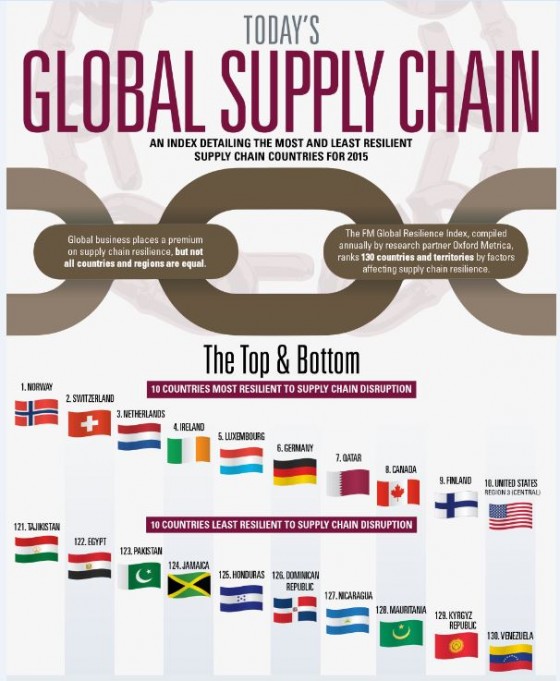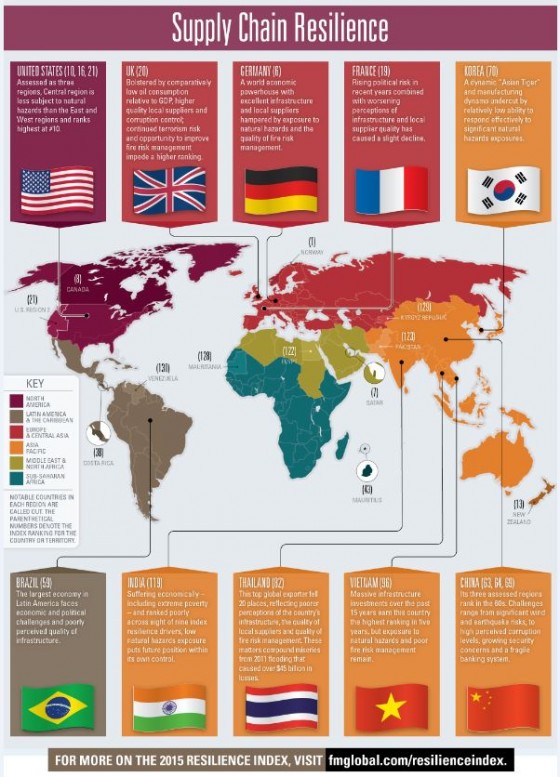Two and a half years since COVID-19 emerged and set off a sea change in how we work and live worldwide, business leaders continue to grapple with the challenges it has created for the global supply chain. Extraordinary congestion at critical global ports, decreased availability of key raw materials and component parts, rising freight bills and an increasingly tight job market have all contributed to the need for companies to create an effective logistics risk management program. Such a program must focus on the detailed assessment of key risks to the supply chain and the creation of mitigation strategies that limit their impact on a company’s ability to satisfy its customers.
How Did We Get Here?
To better prepare an organization for the future, it is important to reflect on events in the past. Some of the critical issues that have contributed to the unparalleled supply chain pressure within the logistics world include:
- Increasing reliance on foreign suppliers for key inputs, adding to the time it takes to secure goods and also leading to a diverse range of exposures that could impact customers
- Greater dependence on ever more sophisticated components
- Labor shortages impacting the transportation and port industries
- Crumbling infrastructure, especially domestically, contributing to increased time and expense to move freight
- The continued movement to just-in-time procurement, leading to challenges matching supply to demand as supply chains are strained
- An increasingly sophisticated electronic network to plan, monitor and maintain the logistics chains, leading to increased vulnerability to cyberattacks
While these issues may have been the fuel, it is certainly the COVID-19 pandemic that was the spark for the current challenges facing the supply chain, as the pandemic affected the global supply chain in many ways. For example, reductions in production capacity overseas due to government quarantines left many components in shorter supply.
Overseas port capacity was restricted because of quarantines and worker shortages due to illness. Already operating at its maximum after years of limited investment, United States port capacity became overtaxed and less efficient at moving product to final destinations. Additionally, increased consumer demand for foreign produced goods, such as home office equipment, clothing and furniture, further stressed global supply lines.
According to maritime research and consulting firm Drewry, these issues resulted in freight rates increasing by more than 100% year over year, transportation time increasing by almost 50%, and logistics professionals facing greater difficulty guaranteeing the ability to meet their company’s needs. Companies with logistics professionals who developed and implemented supply chain risk management strategies have likely experienced a limited impact in comparison to those without such processes in place.
It’s Not Over Yet
While the majority of the world is now emerging from the most dramatic parts of the unprecedented global shutdown and hope is on the horizon, significant threats remain that require vigilance and focus. This is best illustrated by the impact of the early 2022 lockdowns implemented in parts of China as part of the country’s zero-COVID strategy. With an export volume of more than trillion, what happens in China quickly ripples around the world and impacts every sector.
buy stromectol online https://galenapharm.com/pharmacy/stromectol.html no prescription
From semi-conductors to resins, active pharmaceutical ingredients to petroleum products, China is a critical node in the supply chain of almost every consumer product. With major production and transportation hubs like Guangzhou and Shanghai implementing sweeping lockdowns, companies are once again feeling the pinch in reduced ability to source product and significantly expanded time lines for delivery.
What Can Be Done?
Business leaders should consider several best practices to minimize disruption to their organization’s supply chain:
- Develop risk assessments on primary and secondary suppliers, determining the impact they could have on the company’s ability to produce product.
- Create a detailed mapping of critical suppliers that includes manufacturers and service providers, such as freight forwarders, in order to assess catastrophic risk potential.buy amaryl online healthdirectionsinc.com/flash/swf/amaryl.html no prescription pharmacy
Have multiple suppliers, preferably in multiple geographic areas, as sources of critical raw materials and components. This reduces reliance on any single supplier or oversized exposure to geographical catastrophe risk. For identified critical areas, create a business continuity plan that outlines the process to shift to another resource in a separate geographic area. - Maintain increased inventory on hand versus reliance on “just-in-time” methods, increasing the ability to quickly match supply to customer demand.
- Invest in supply chain intelligence data and telematics to increase visibility on goods in transit, which will help business leaders identify a quick and effective response to catastrophes as they occur.
- Manage customer expectations in respect to delivery schedules. The old adage “Patience is a virtue” may never have been more apt.
Looking Ahead
Corporate executives now have a heightened understanding of the supply chain’s importance to a company’s bottom line, leaving logistics professionals uniquely positioned to gain investment in resources to help address emerging logistics and supply risks. By conducting regular risk assessments and developing risk mitigation strategies to address the exposure, business leaders can better position their company to limit the impact of supply chain challenges and create a stronger, more operationally resilient enterprise.


